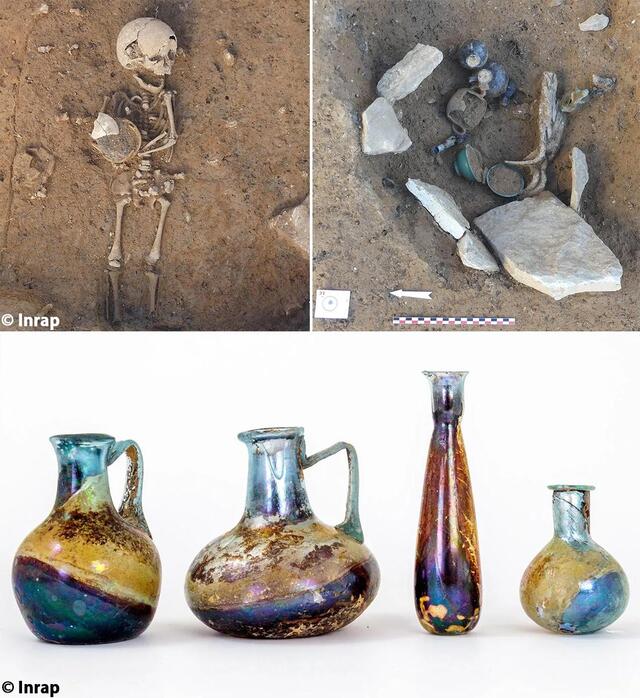An extraordinary archaeological excavation in the French city of Nîmes has unveiled a treasure trove of Roman artifacts, including burial sites and fine glass goods, dating back over 2,000 years. Conducted by the French National Institute for Preventive Archaeological Research (INRAP), this excavation along Rue de Beaucaire provides fascinating insights into Roman funerary practices and the city’s rich history as the Roman colony of Nemausus. With its well-preserved finds and historical significance, the discovery sheds new light on life and death in ancient Rome.
Historical Context of Nîmes
Known as Nemausus during the Roman era, Nîmes flourished as a Roman colony beginning in the 1st century BCE. Its strategic location and urban planning made it a significant hub in southern Gaul. The city’s layout followed the Roman model, with major roads such as the cardo (north-south axis) and decumanus (east-west axis) converging at the forum, the political and economic center.
One of the city’s most iconic structures is the Maison Carrée, a perfectly preserved Roman temple built during the latter part of the 1st century BCE. Nîmes’ importance as a Roman city is further evidenced by its grand amphitheater and aqueduct, including the famed Pont du Gard. These architectural marvels underscore the city’s cultural and economic prominence during the height of Roman rule.
Excavations at Rue de Beaucaire
The recent excavations on Rue de Beaucaire have revealed burial sites spanning from the 2nd century BCE to the 2nd century CE. Roman law prohibited burials within city limits, so these funerary sites were located just outside the ancient urban boundaries. The burials are enclosed within delineated funerary enclosures, with only their foundations remaining.
Among the burial methods uncovered, cremation was the most common. Pyres were constructed using limestone rubble or terracotta bricks, while some were simply dug into the ground. Following cremation, the remains were collected and interred in graves within the pyre area or in adjacent annexes. These practices reflect the deep cultural and religious significance Romans placed on honoring the dead.

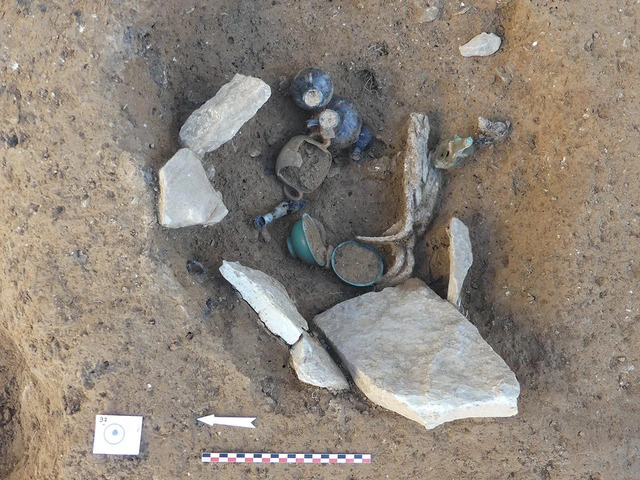
Types of Burials Uncovered
The excavation uncovered a variety of burial types, each providing unique insights into Roman funerary customs. Cremation pyres dominate the findings, showcasing the Romans’ emphasis on purification through fire. These pyres were often accompanied by personal belongings and ceremonial items, highlighting the importance of ensuring the deceased’s passage into the afterlife.
In addition to cremation, inhumation burials were also discovered. One particularly poignant find was the burial of a small child, accompanied by a ceramic jug and lamp. These items reflect the care and ritualistic nature of Roman funerary practices, symbolizing provisions for the journey into the afterlife. Such burials offer a glimpse into the emotional and cultural values of ancient Roman society.
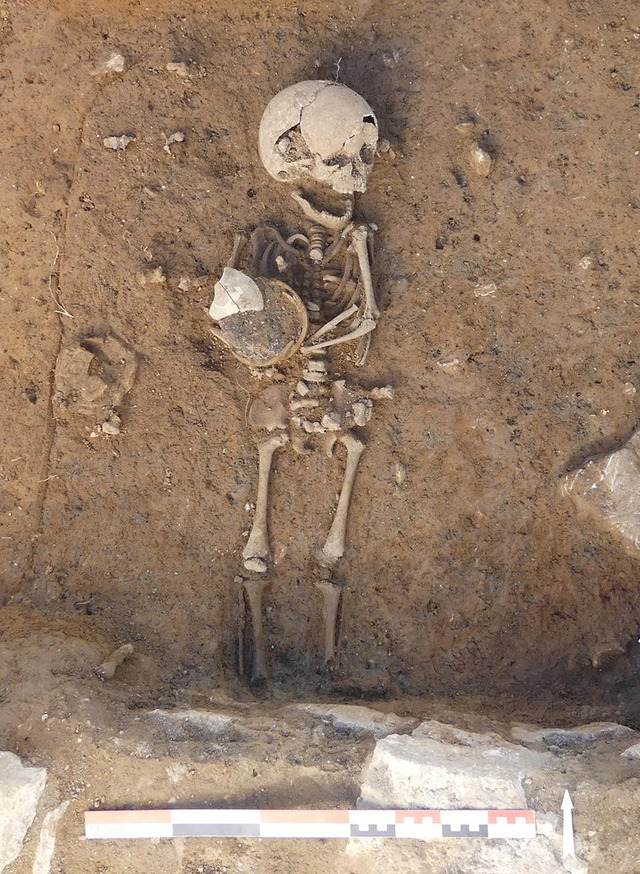
Artifacts Discovered
The excavation yielded a wealth of artifacts, ranging from everyday items to ceremonial goods, many of which are remarkably well-preserved. Among the most notable finds are the fine glass vases, which were often used in rituals such as the refrigerium. This commemorative meal, held on the day of burial, was conducted by female priestesses and involved the consumption of wine using these exquisite vessels. The glass vases, with their iridescent hues, not only serve as examples of Roman craftsmanship but also provide insights into the social and religious practices of the time.
Other artifacts include ceramics, lamps, and personal items such as strigils (used for body cleansing), emphasizing the Romans’ attention to detail in preparing their dead for the afterlife. These objects also highlight the material wealth and trade connections of Nîmes, as many of the goods display influences from across the Roman Empire.

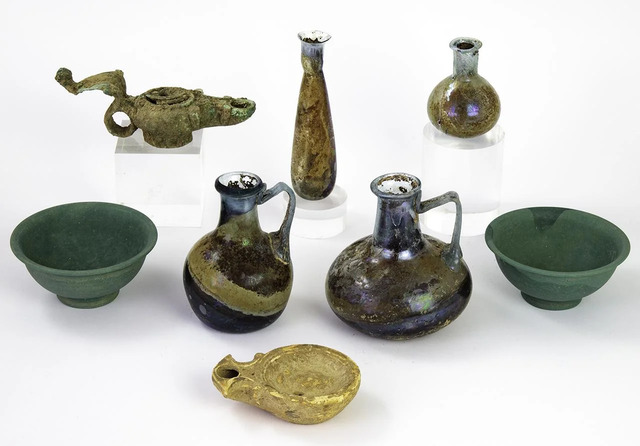
Notable Burial Sites
Among the numerous burials uncovered, Chamber Tomb XX stands out as a particularly significant find. This tomb contained the remains of several individuals, along with an impressive collection of grave goods. The presence of glass vases, a bronze oil lamp, and other artifacts underscores the wealth and status of those interred within.
Another remarkable site is the burial of a child, which poignantly reflects the care and rituals associated with Roman funerary customs. The ceramic jug and lamp found alongside the child’s remains provide a glimpse into the emotional and symbolic aspects of burial practices, offering clues about the family’s beliefs and societal values.
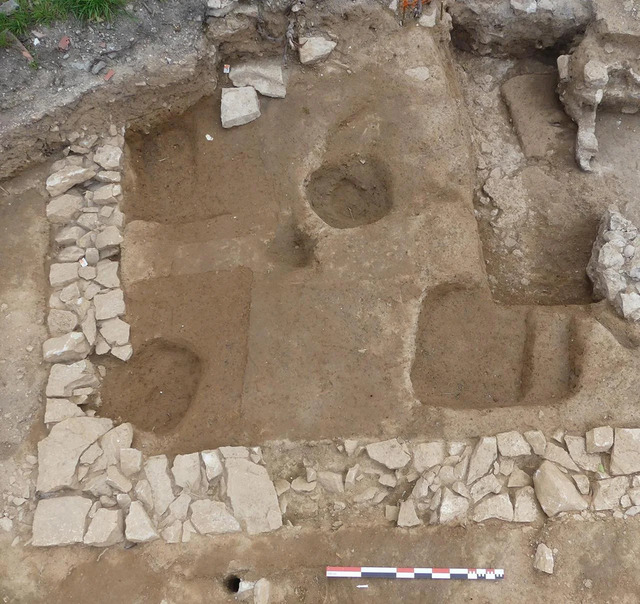
Additional Discoveries
Beyond the burial sites, the excavation revealed the presence of a well, though it is currently concealed beneath modern constructions. This well may hold further potential for exploration and discovery, offering additional insights into the daily lives of Nîmes’ ancient inhabitants. Its presence near the burial sites suggests it may have served as a source of water for funerary rituals or as part of the broader infrastructure of the area.
The funerary enclosures themselves are a significant discovery, marked by the remains of walls that once delineated these sacred spaces. Within these enclosures, archaeologists uncovered masonry pyres and secondary cremation deposits, highlighting the organized and ritualistic nature of Roman burials.
Public Engagement
The archaeological site has generated significant interest from the public and local community. On April 13th, the excavation site was opened to visitors, offering guided tours led by archaeologists. These tours provided attendees with a firsthand look at the burial sites, artifacts, and insights into the history of Roman Nîmes. Public engagement initiatives like this highlight the importance of preserving and sharing archaeological discoveries, connecting modern audiences with the ancient past.
Conclusion
The excavation along Rue de Beaucaire in Nîmes has provided a remarkable window into Roman funerary practices and daily life. From the finely crafted glass vases to the poignant burial of a child, these discoveries shed light on the cultural, religious, and economic aspects of life in ancient Nemausus. As research and exploration continue, the site promises to reveal even more about the rich history of this Roman colony, underscoring the enduring legacy of the Roman Empire in shaping the world we know today.
